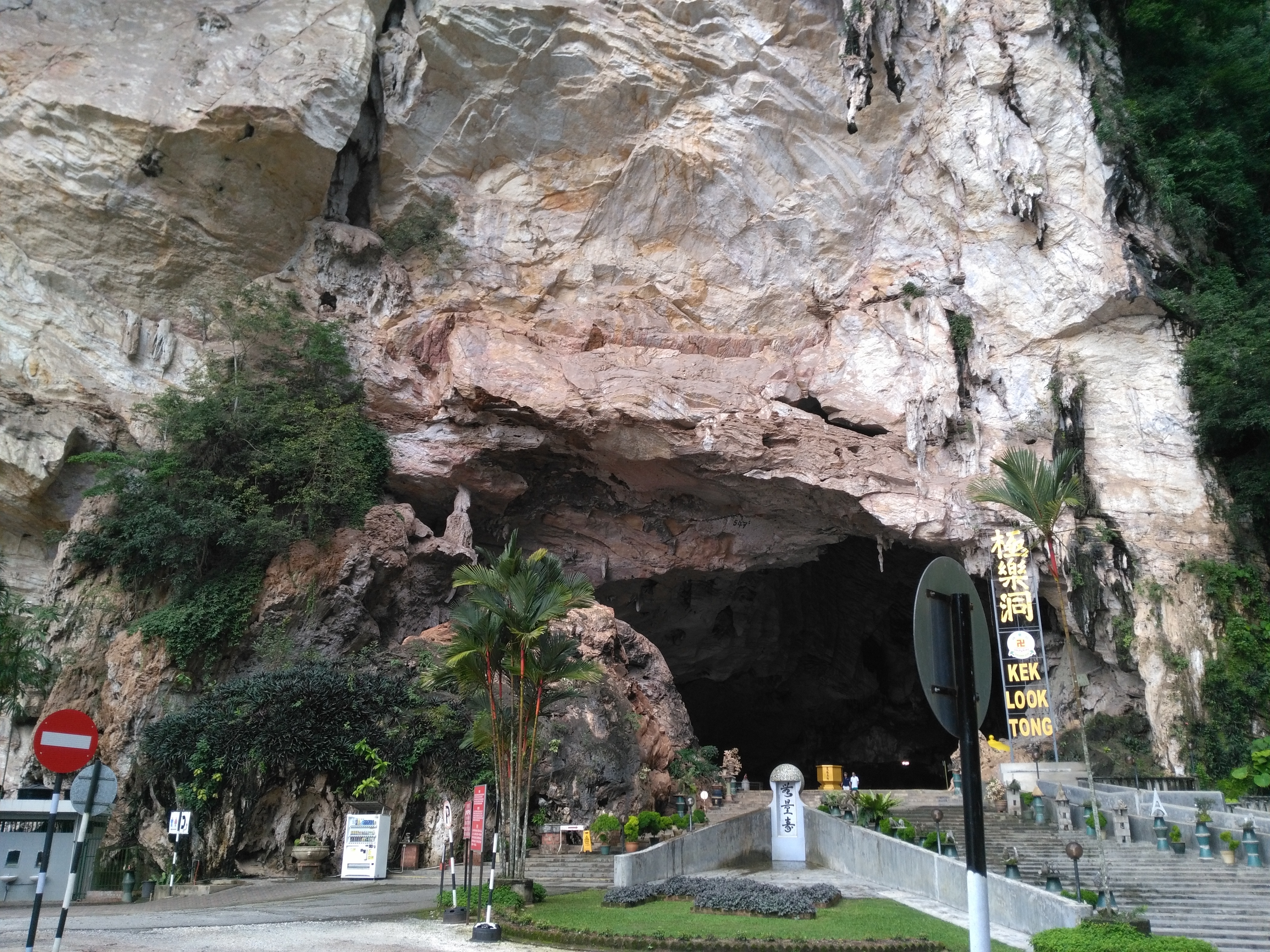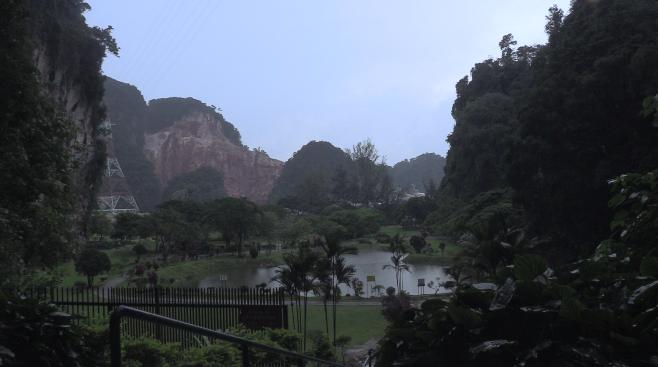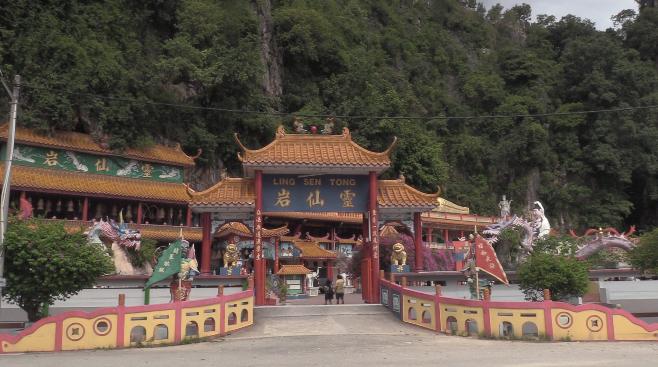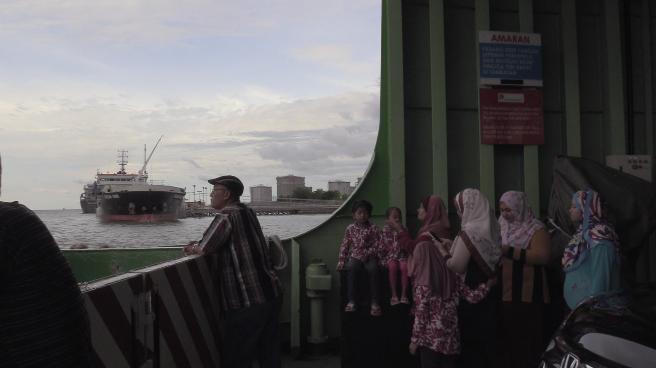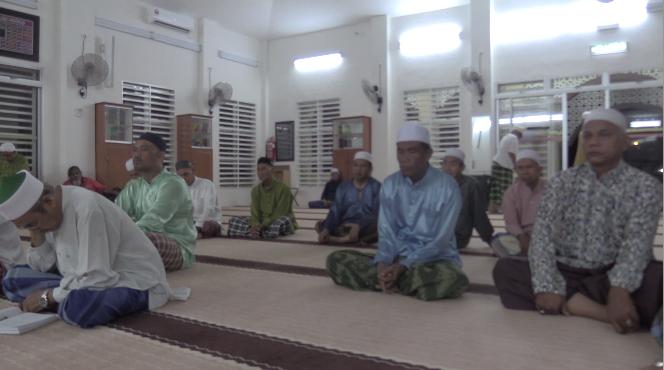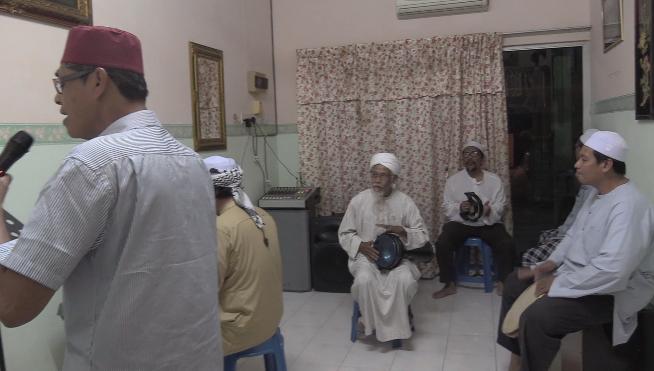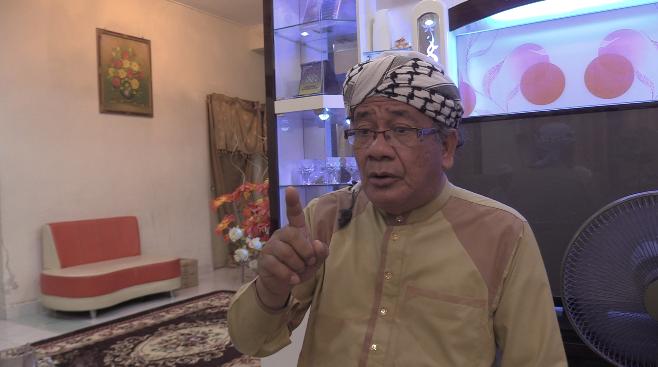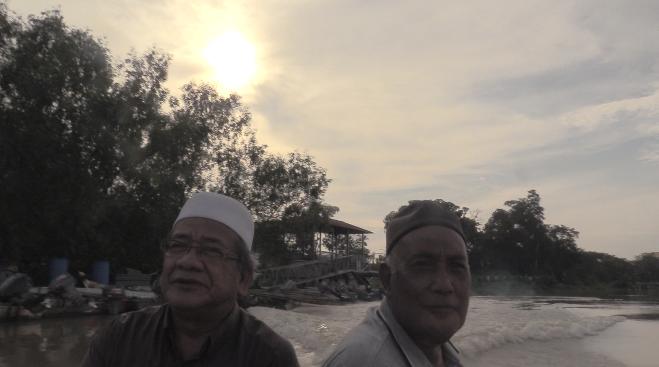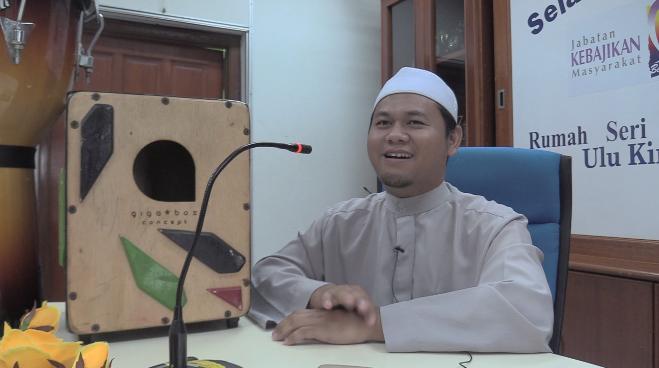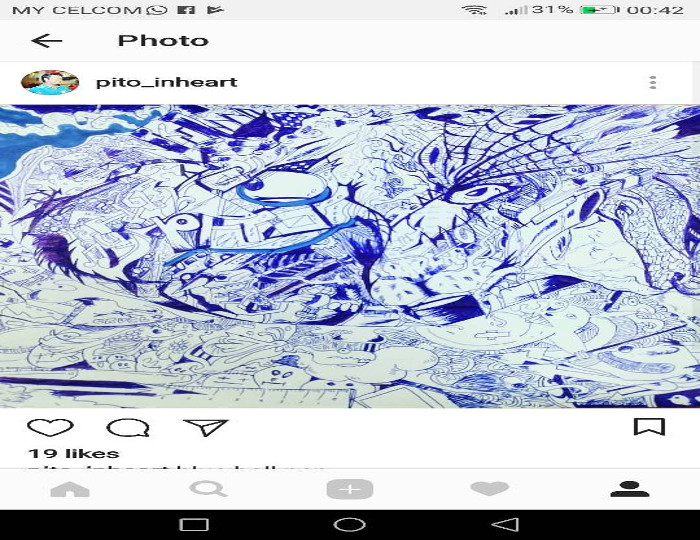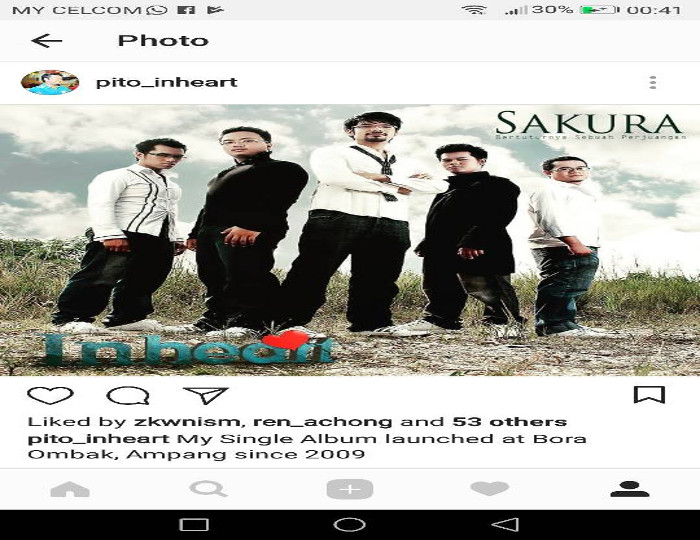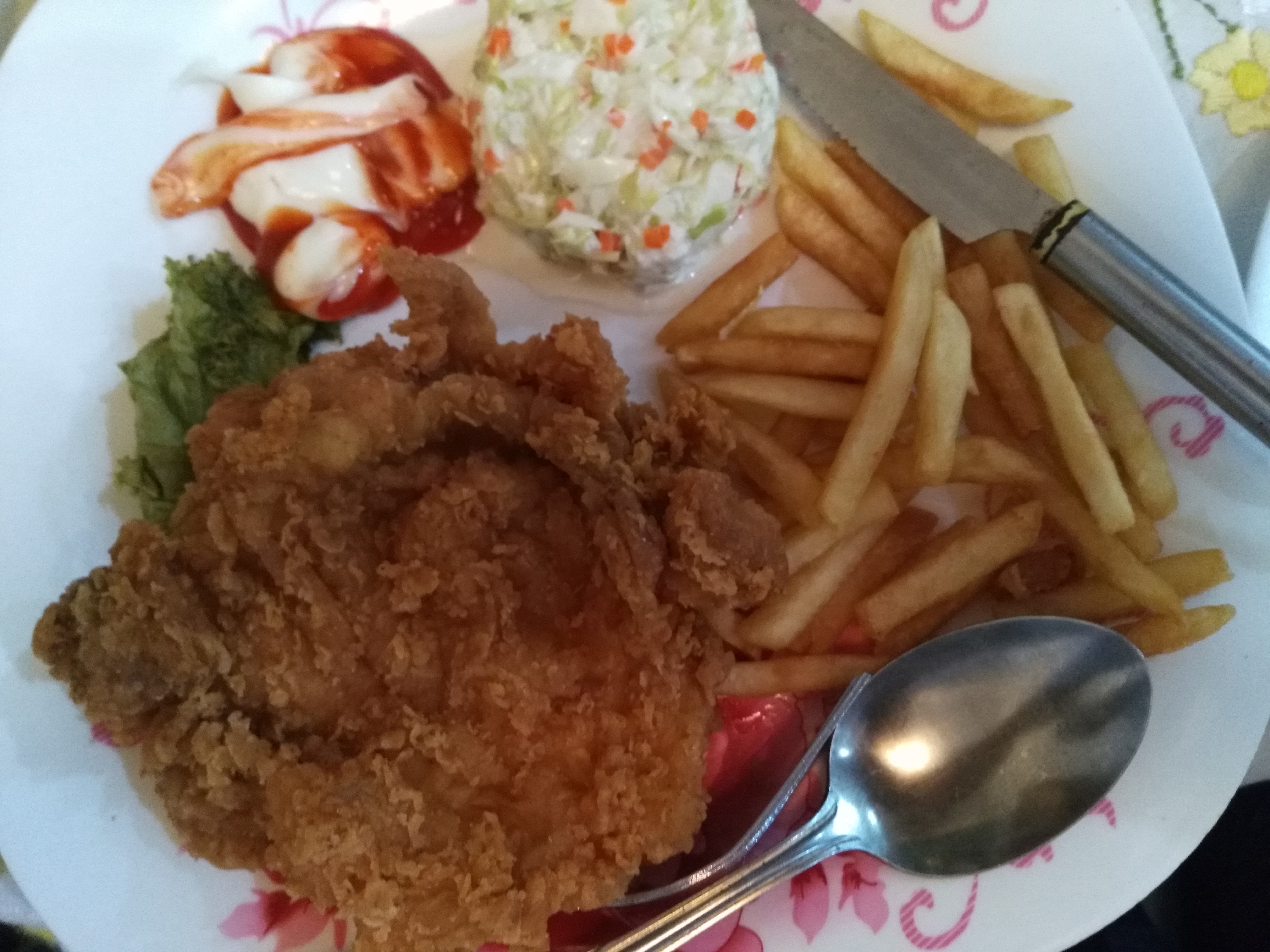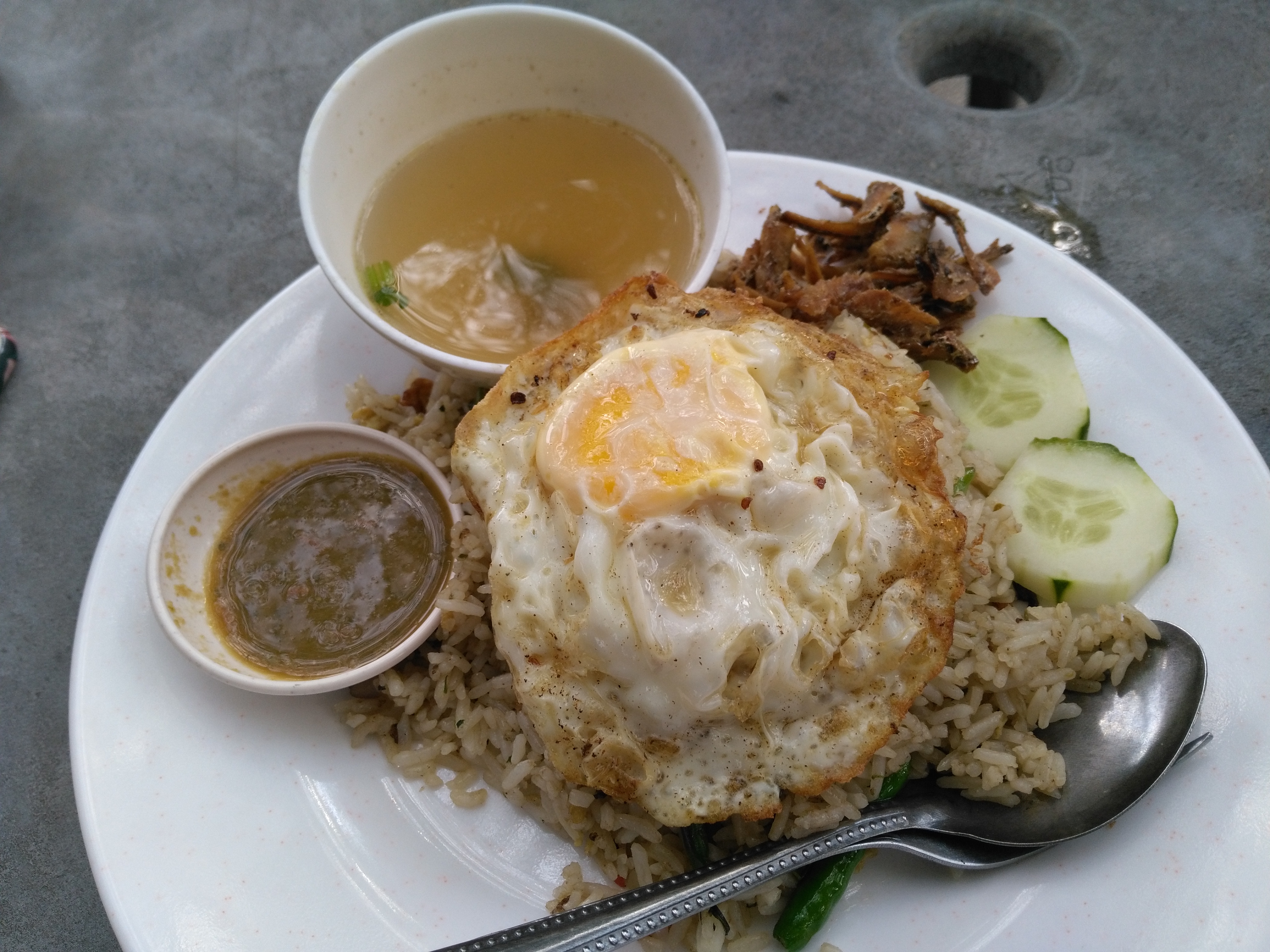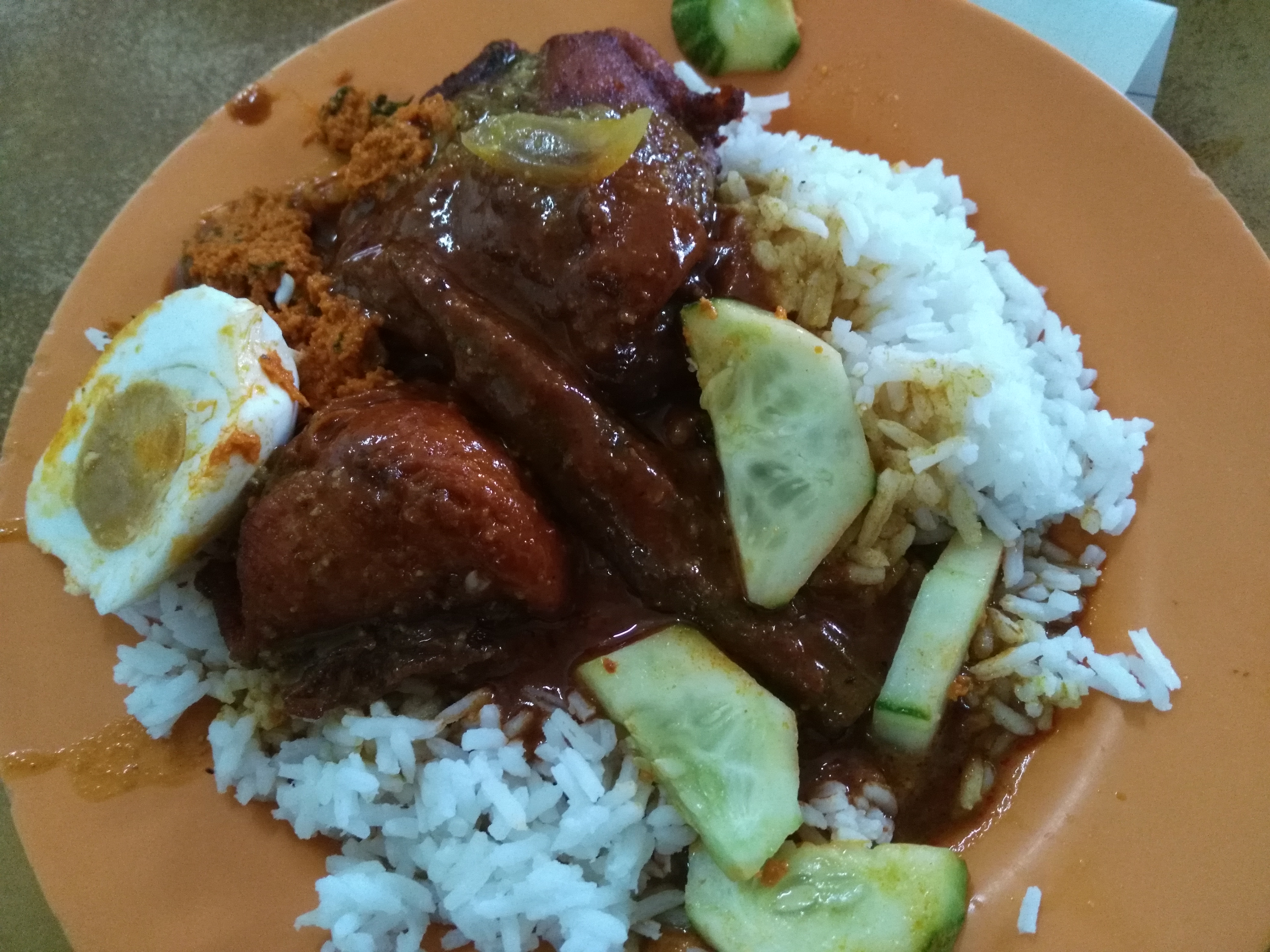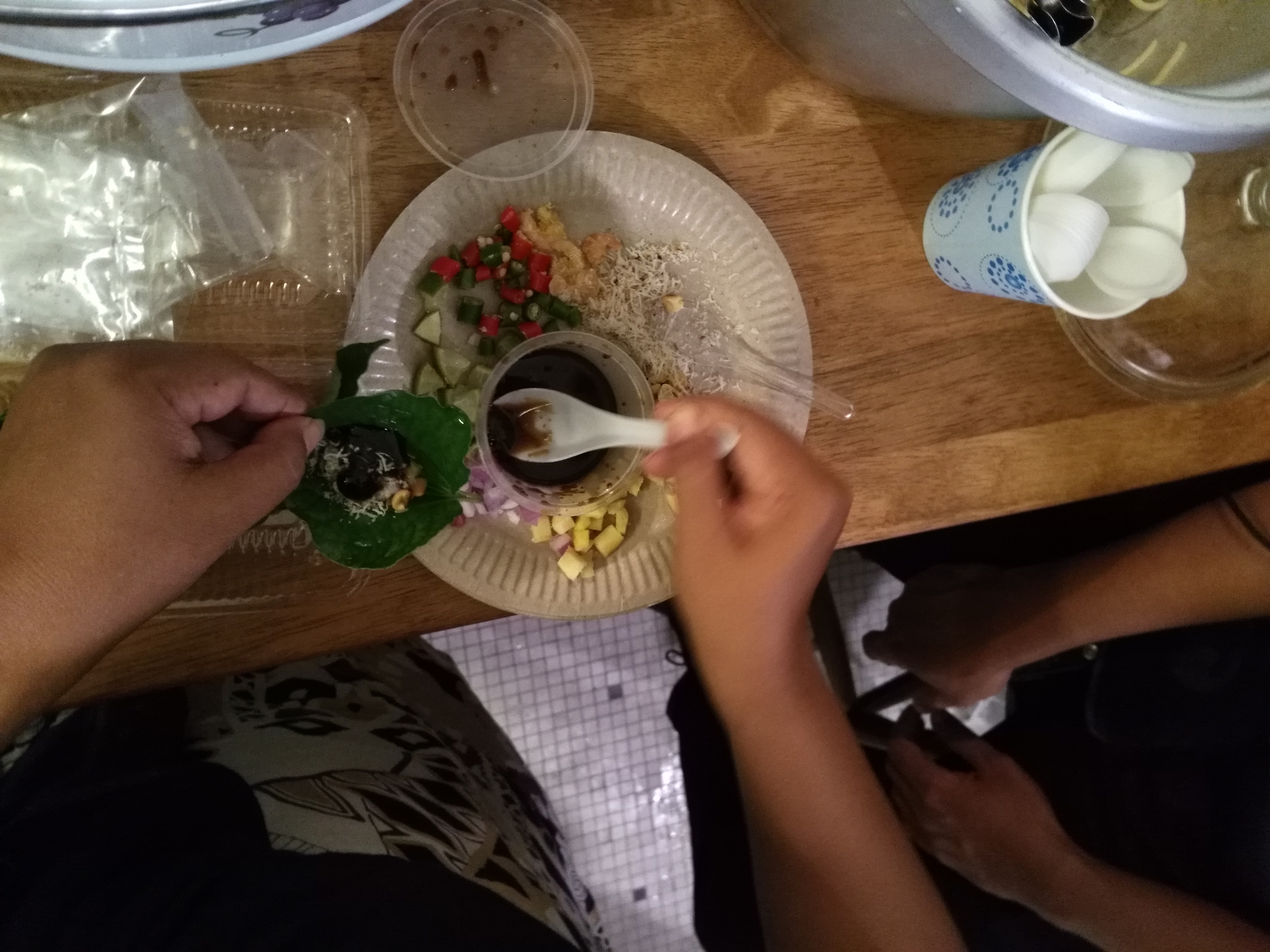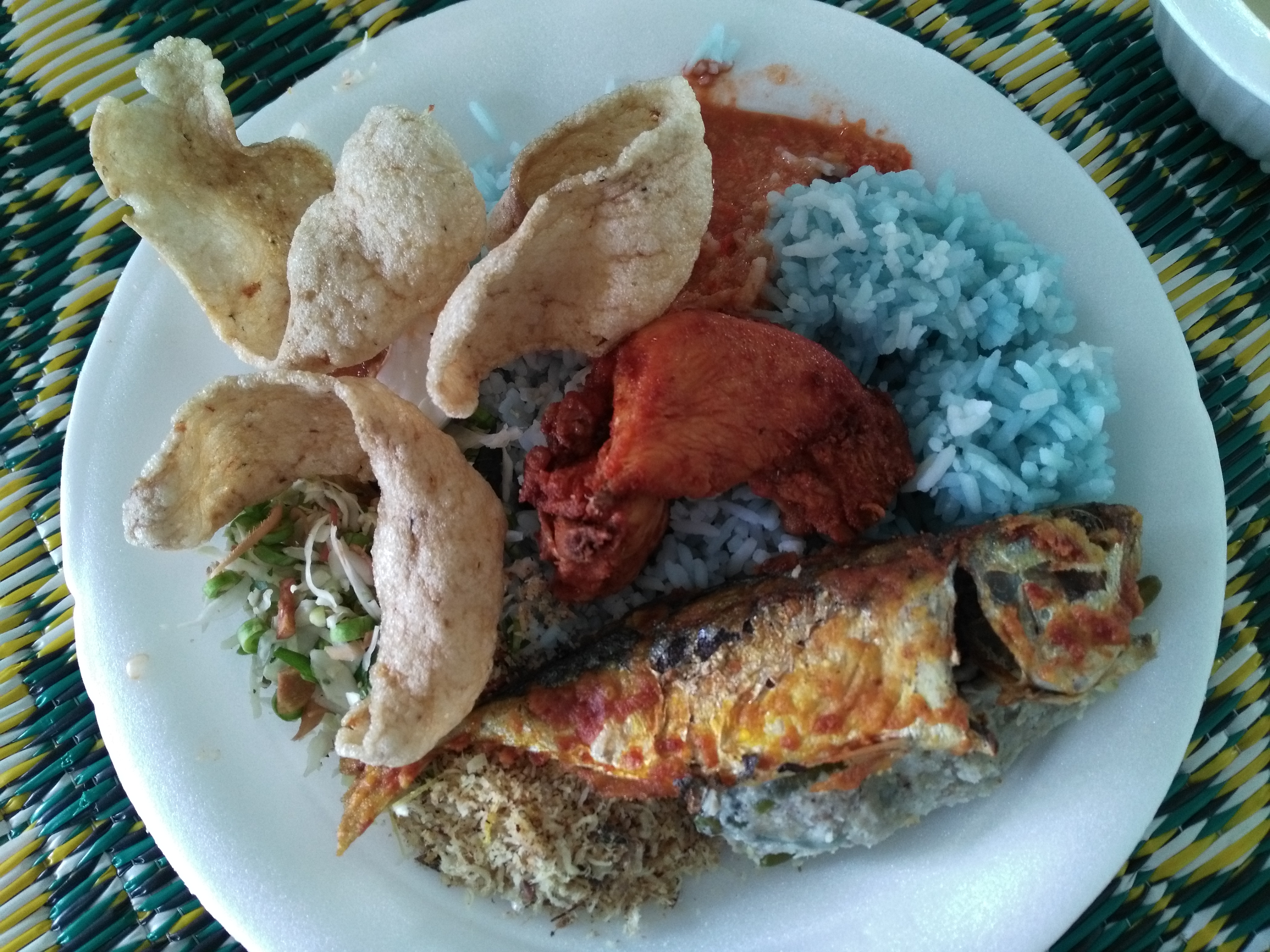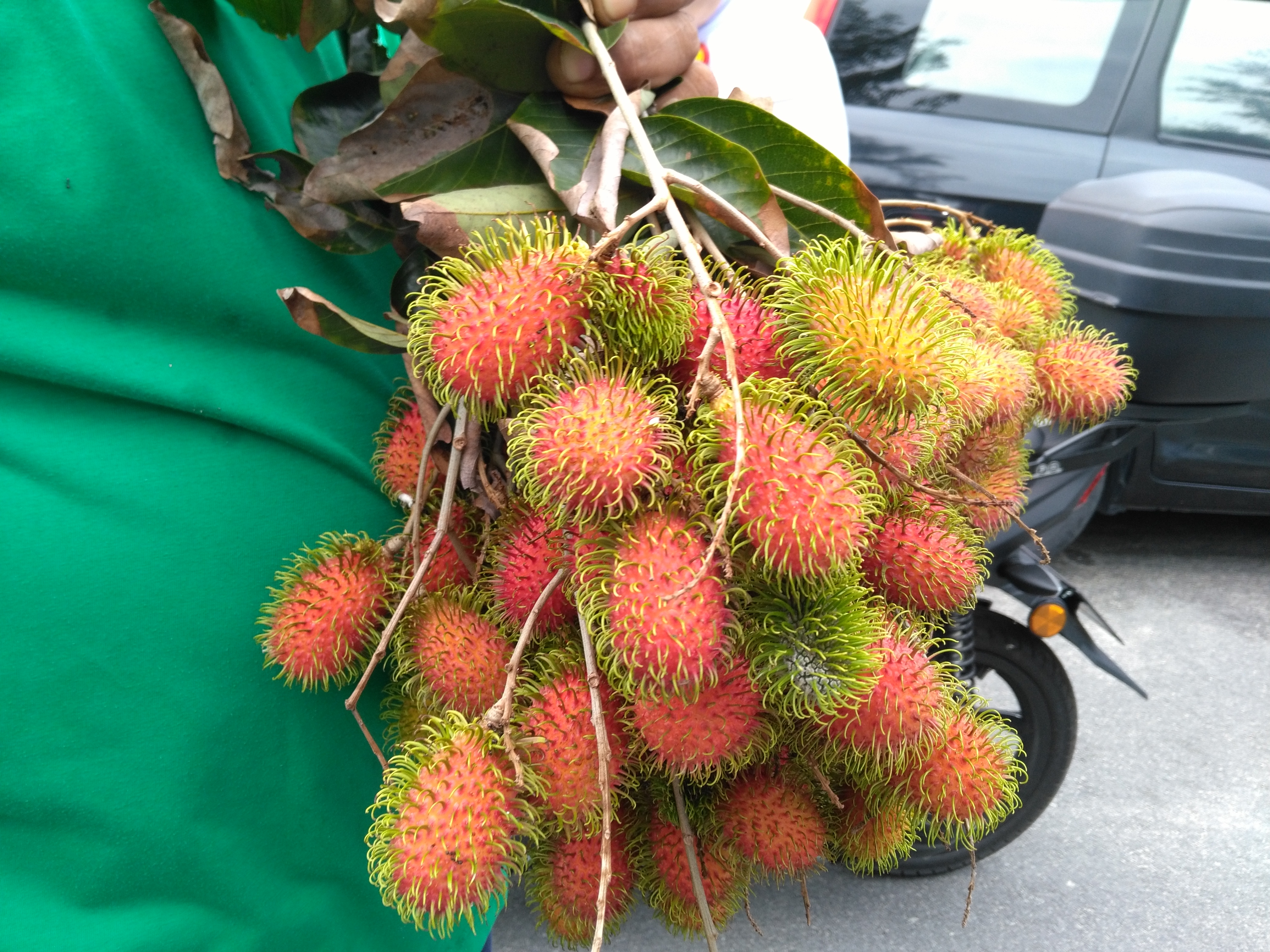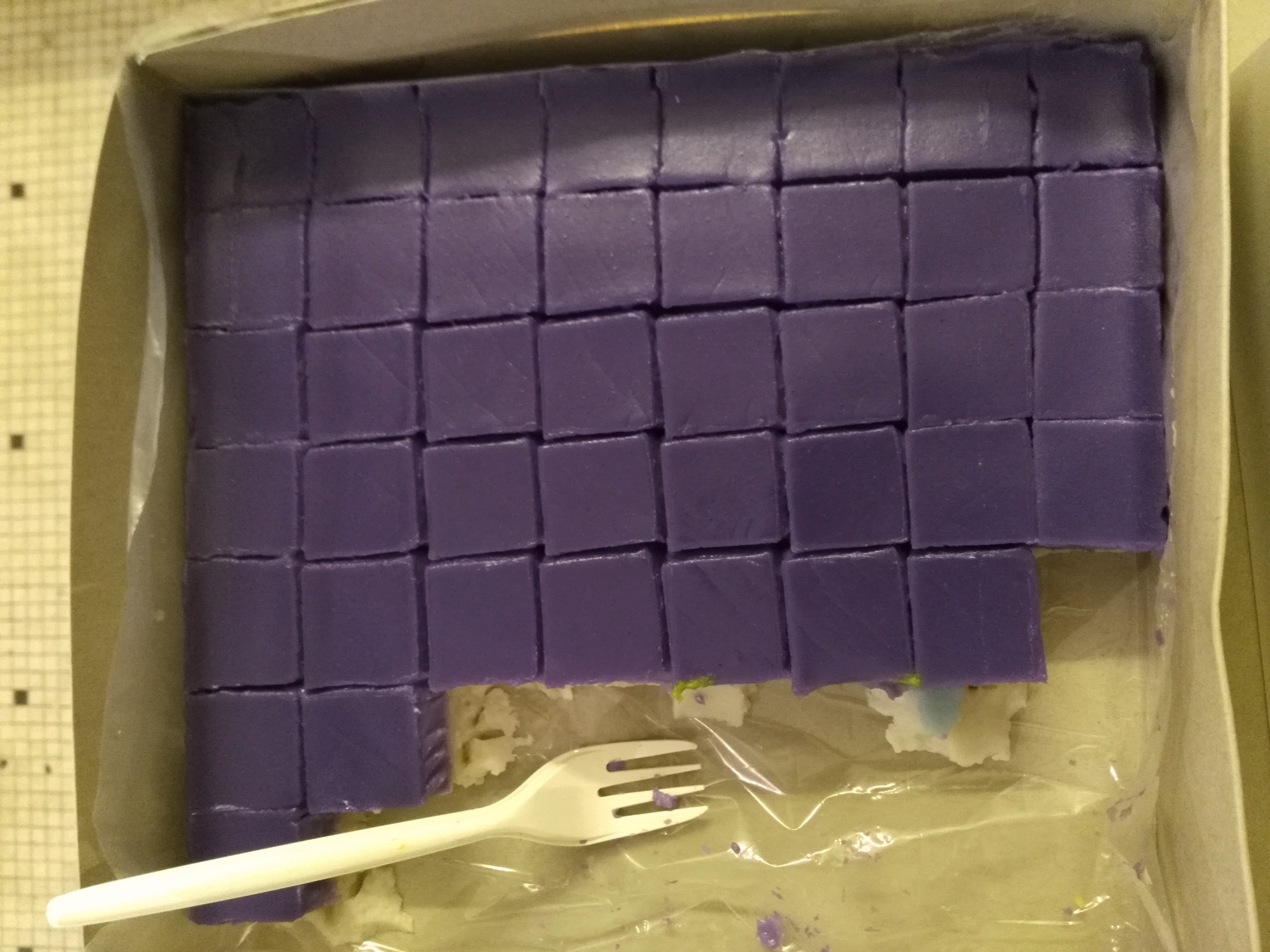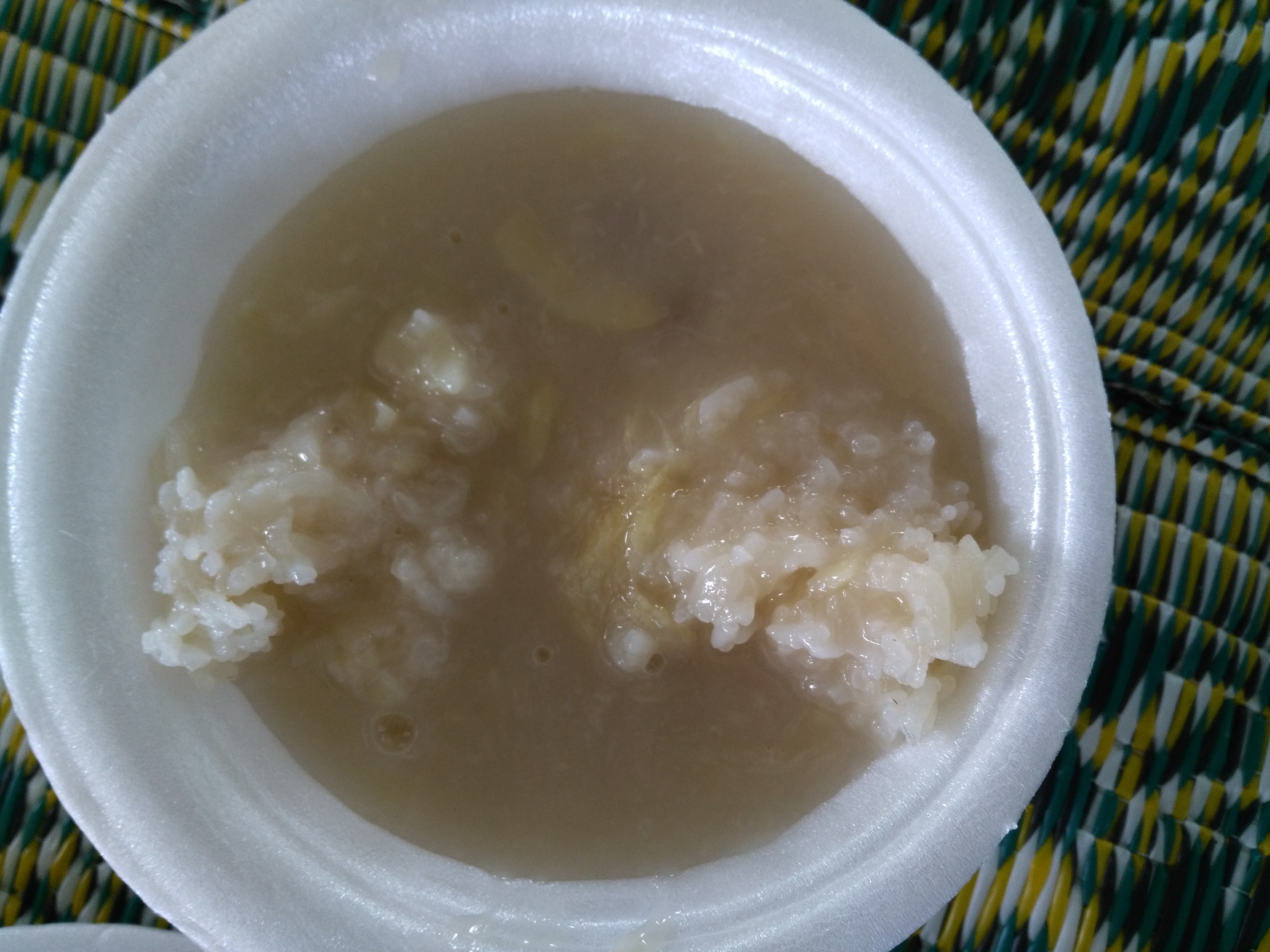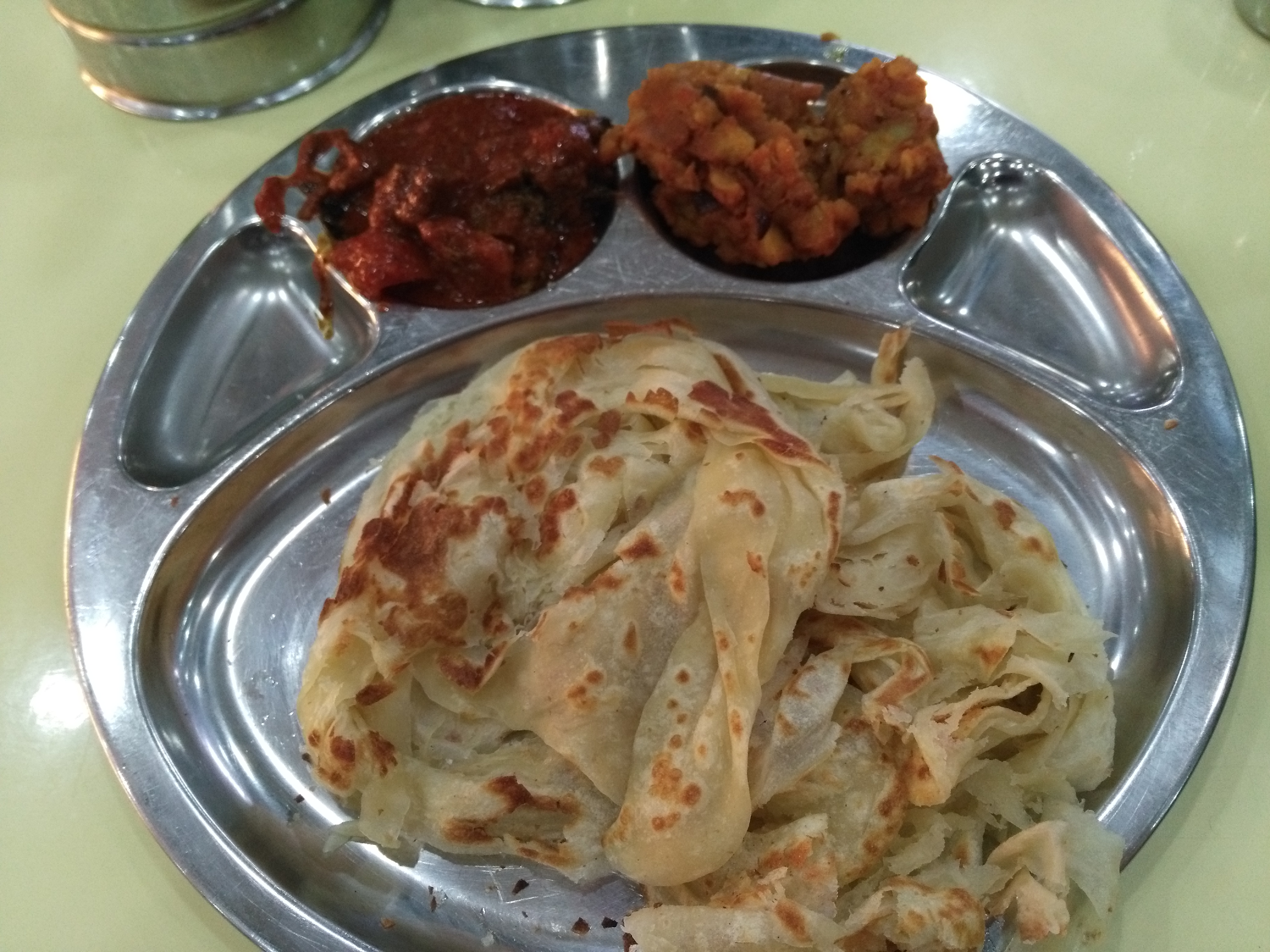Heading North
26 Nov 2017
Reading time ~18 minutes
This week marked the end of my five week parade in Kuala Lumpur. I finally made my way to Penang by the end of the week, just in time for the Georgetown Literary Fest. Along the way, the smaller towns of Ipoh and Teluk Intan were graced by my presence.
Interviews
Ustaz Abdul Wahab
One of the most interesting interview experiences I’ve had on my travels thus far has got to be my encounter with Ustaz Abdul Wahab (ustaz is simply an honorific title for a religious teacher) and his Islamic band Kumpulan Sima’ Getaran Hati which is a sama’/sima’ group comprising five members - lead vocals, keyboard/synthesizer, cajon, darbuka, and miscellaneous percussion. My time with Ustaz and his band started out with attending a kulia (religious class/lesson) led by Ustaz at a newly built surao in the village of Teluk Intan. Thereafter, Ustaz arranged for a short practice session with his band for me to film followed by a dinner with the band at his home and a curiously formal interview session with him and the band thereafter. Because Ustaz doubles as a religious teacher and politician (in addition to making music and serving as an Islamic healer or mua’lij), our meeting unfolded analagously to a meeting of an Islamic political party, commencing with holy words, proceeding with each person present at the meeting including myself being obliged to provide formal introductions to ourselves, and terminating holy words. It felt a bit like we were all at a press conference as opposed to the family room of Ustaz’ small home in the middle of the tiny village of Teluk Intan.
The ages of the members of Kumpulan Sima’ Getaran Hati range from early forties to late seventies. The term sama’/sima’ carries a good deal of technical baggage in the sacred sound contexts of Sufi rituals. I summarized this technical difference, in my last post. For all I could tell, the sounds of Kumpulan Sima’ Getaran Hati were rather indistinguishable from the sounds of pop nasyeed that I’d been exposed to while in Malaysia. Ustaz Wahab insisted however that there were a number of key differences from what his band puts out as opposed to that of an average nasyeed group in Malaysia. Right off the bat, Ustaz told me that sima’ maintains higher standards than nasyeed. Upon carefully listening to sima’, one has the potential of being overcome with zout, which is a feeling afforded by Allah that energizes and uplifts the spirits of listeners, allowing them to be that much better in their roles as slaves serving Allah. Ustaz’ went on about how the rhythm and lyrics of sima’ must be able to touch one’s soul, solidly gaining control over one’s heart or feelings. Unlike the lyrical content of nasyeed which merely ought to generally be about religious themes, sima’ lyrical content is much more strictly limited to excerpts frfom the hadith, quran, or jurisprudence of religious scholars. Audience members must be gender segregated and dressed in accordance with the shariah (Islamic law). Listeners must focus entirely on the musical performance at hand and exhibit good akhlaq (put simply, manners) - ideally no eating, talking, or laughing during the performance. Given the right conditions, Ustaz told me that his band almost always makes at least one audience member at their events cry irregardless of type of venue or the city in which they perform. Ustaz also dropped in a few rather miscellaneous powers of sima’ in addition to its fundamental role in bringing about the maudlin side of and a commitment to zealous servitude in believers. According to Ustaz, sima’ can and has been used to energize soporific camels, tame crying babies and put them to sleep, and even tranquilize angry or nagging spouses. I found it difficult to look over the mystical and cryptic nature of this difference that Ustaz’ attempted to communicate to me. I also found it a bit perplexing as to how Ustaz could capitalize so much so on staying true to sima’ in his band when they also play their music in rowdy environments like street markets and weddings, during which people inevitably eat, talk, laugh, and don’t pay attention to performances at hand. I suppose what Ustaz meant by insisting on the notion that his band was a sima’ group as opposed to a <p>nasyeed</p> group was more so of an indication of dedication to an ideal as opposed to something which is carried out in practice at all times.
On the topic of the legality of playing and listening to music in Islam, Ustaz Wahab shared an awesome, rather unbelievable story with me regarding the issue at hand. He first told me a bit about his own involvement with music from a young age as a dabbler in flute, harmonica, and guitar. In the year 1975, however, Ustaz completely ceased music making and listening due to the influence of a single local, anti-music Islamic scholar. Having been exposed to a competing scholarly opinion on the topic of music in Islam in 2007, he reverted to the pro-music camp once again after having exiled himself from it for 32 years. Subsequently, Ustaz became increasingly interested in music’s functional potential for dakwah (the propagation of Islam). He thus started to serve as a frontman for Islamic music performed in both indoor and open air settings. At one point, Ustaz Wahab sent a request to a various government officials throughout Malaysia if he and his religious band could perform for them in the auspices of their government sanctioned events. Ustaz’ requests were approved by the majority of these officilas. However, certain ulama (religious scholars) from the state of Perak, Ustaz Wahab’s home state, took it upon themselves to lobby the leader a government official in Perak to convince him that music making was undoubtedly haram and that Ustaz Wahab’s request must certainly be denied. These contentious ulama sent Ustaz Wahab and the leader in Perak a fatwa (religious ruling) on the topic of music, essentially forbidding playing and listening to all musical instruments on religious grounds. Ustaz Wahab was quick to point out that the fatwa’s conclusions only provided a single khilaf (opinion) on the matter and that the general public would be much better served if religious authorities provided all of the various perspectives regarding scriptural interpretations in their fatwas as opposed to clearly displaying one’s bias. In a bold act of defiance, Ustaz Wahab burned the fatwa book the anti-music ulama provided him with in front of a large number of influential peole. At the end of the day, despite all this drama, Ustaz Wahab’s group was able to perform at a number of parliamentary functions, gaining validation and applause along the way. Ustaz leads his sima’ group without thinking twice about it, because he’s convinced of the credibility of the legal position on music permissibility in Islam he agrees with in addition to recognizing the simple need for musical alternatives to the more predominant forms of music today which take shape in secular pop, rock, and rap, the lyrical content and musical cultures/sub-cultures of which Ustaz Wahab likely takes a number of issues with. In light of Ustaz’s commitment to religious music making, I was surprised to hear that he still caters to rather stringent restrictions on music making decided on by a few local religious scholars. In particular, Ustaz Wahab told me that most all instrument were perfectly fine to play, even especially electronic/digital instruments (because these are not at all mentioned in the Quran/hadith for obvious reasons), but as far as Ustaz is aware, tabla drums were most definitely haram along with a few more questionable items such as the rebana ubi. Upong asking Ustaz why these instruments were singled out in particular by certain ulama he’d heard these rulings from, he explained that he wasn’t actually quite sure. My guess is that the ulama who made such perplexing judgements perceive drums such as the tabla and rebana ubi as being inextricably associated with Hindu spiritual practice or other questionable spiritual or cultural associations. Then again, this characteristic is potentially true of virtually any instrument whatsoever. I suppose Ustaz Wahab’s ability to suspend judgement on this matter is analagous to his lack of questioning the religious scholar who convinced him to stop making music between 1975 and 2007.
Faris the Metalhead
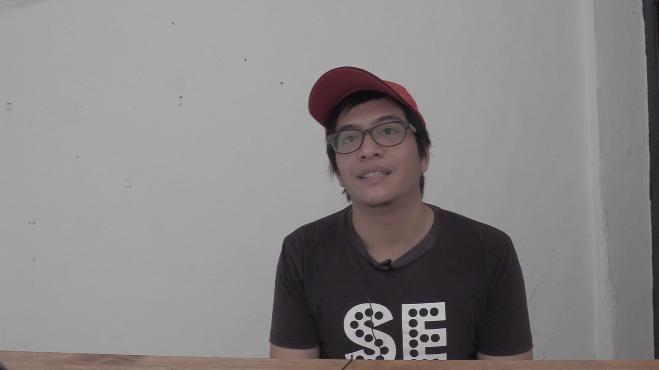
My second interview of the week was with a metalhead who he told me that he’s lost count of the number of bands that he’s played in. Faris Fuad is a musician based in Ipoh who recently quit his full-time design gig to make way for a more intensive involvement with playing and teaching music, particularly to develop the sound of his new band and make way for recordings sessions. This decisions was made somewhat to the chagrin of his parents who envisioned their child to embrace what he had studied in univeristy, namely a year of architecture followed by a full course in graphic design. Perhaps his parents are to blame for the rock/metal bug in his system, because his father was an avid fan of classic rock, while his mother enthusiastically enrolled him into music classes, though shortlived, from a young age. To both his parents, music was seen to be largely a form of entertainment that one should be wary of getting too hooked on, thereby surpassing religious boundaries. To counterbalance Faris’ exposure to the world of music and all of its sub-cultures, his parents were keen on securing his religious education alongside his primary schooling for instruction in Islamic fundamentals. All throughout his childhood, Faris had a bent for questioning the kinds of religious ideas he’d come home with from religious school, sometimes to the exasperation of his mother who occasionally found his curiosity rather indignant. Queries revolving around haram and halal designations were particularly troublesome, a case in point being whether or not music making is haram or halal. Faris pointed out the hypocrisy of his own family members and most Southeast Asian Muslims for that matter for listening to music and simultaneously pledging their allegiances to religious leaders who claim to belong to the Shafi’i madhab (school of Islamic jurisprudence) when in fact Imaam Shafi’i took a rather stringent stance with regards to playing and listening to musical instruments, limiting the permissibility of such activities to only select instruments and select occasions (e.g. only percussion instruments such as the daf for wedding celebrations).
Hypocrisy was the theme of the rest of my interview with Faris, particularly with regards to the sub-cultures of extreme music making in the Malay world. The anchor of our discussion was the apparent nonsensensical behavior of Muslims who on the one hand prayed five times a day and on the other hand listened to or played all sorts of extreme music that cater to sinful behaviors/lifestyle choices and sacreligious lyrics and imagery. This paradox is given due process in metalhead and freelance writer and reseacher Marco Ferrarese’s book Banana Punk Rawk Trails which I highly recommended to all of you metalheads and pious Muslims out there just the same. From what I was able to gather from my interview with Faris and from reading Marco’s book, the majority of pious Muslim metal fans simply “talk the talk” but are not willing to “walk the walk”. In other words, most metal concert going religious Muslims engage in cosplay to varying degrees. For those devout Muslims whose engagements with sacreligious metal goes beyond merely dressing up, acting tough, and going bezerk on stage or in the audience of a concert venue (i.e. posing), the singing and enjoyment of overtly blasphemous lyrics is explained largely by alternative interpretations of such lyrics or a fundamentally different perspective taken on the sub-cultures of metal altogether. Expressions like “God is dead” can be understood on a number of levels when abstracted. “God is dead” can be understood by an atheist to mean that atheism is superior to theism. “God is dead” to a conservative Muslim could mean that contemporary society is losing a hold of divinely prescribed ethics and morality, and that religious revival is imminent. One could abstract “God” in “God is dead” to refer to human establishments as opposed to divinity. Etc. etc. It is important to point out that such openness to interpretation becomes much more limited in the eyes of religious Muslims when anti-religious diatribes are targeted directly at Islam, Islamic figures, or Islamic authorities. Muslim metalheads are quicker to rock out to “God is dead” or “Jesus is dead” as opposed “Allah is dead” or “Mohammed is dead”. This particular point adds another layer to the clutter of hypocrisy that shrouds the various subcultures of extreme music in the greater Malay world (all or parts of Malaysia, Singapore, Brunei, Indonesia, and Thailand). This double standard is prominent not only in the realm of music making, but really in all spheres of life which official/canonical Islamic discourse has poked its judgemental head into. Muslims may bemoan difficulties or paradoxes in the lives of Muslims and Muslim metalheads may screem “God is dead” at the top of their lungs as much as they wish, but if a Chinese Christian/Buddhist or a Indian Hindu merely questions the utility of the 5 daily prayers in Islam purely out of curiosity they may be visciously shut down in social media or otherwise in the public sphere.
Mohd Adam Jalaludin & PeaceBeUponYou
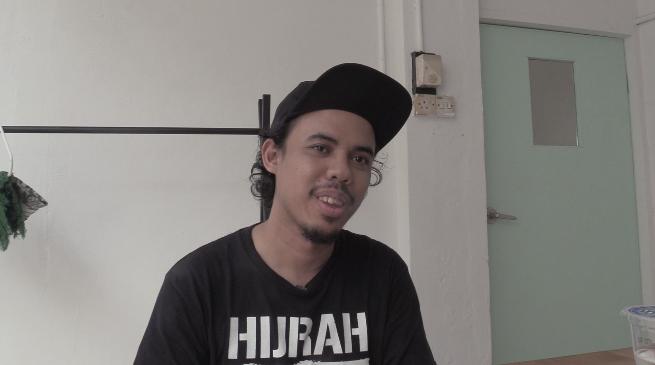
My interview with Mohd Adam Jalaluddin of the fashion line PeaceBeUponYou marked my entry into the world of Islamic fashion (I left Adam’s newly opened shop in Ipoh with a slick cap, an assortment of stickers, and a keychain all advertising the PeaceBeUponYou brand). My interview with Adam added additional clarity to the “subtle” approach taken by Muslims in their Islamic themed creative and entrepreneurial pursuits. As far as I’ve been able to glean from my travels, dakwah (islamic propagation) comes in two major flavors - “subtle” or “in your face”. “In your face” dakwah comprises the missionary activities of the Tablighi Jamaat, members of which go from door to door to persuade Muslims to join them in prayer or commit to attending one of varying durations of religious retreats or missionary journeys. Other “in your face” forms of dakwah include the miscellaneous activities of religious task forces sanctioned by religious organizations or political parties to yell at random citizens in the streets about Islam and the need to be more religious or to raid events on suspicion of individuals engaging in activities illegal in or harmful to Islam. The form of dakwah mostly embraced by Muslim creatives takes the face of “Islamic theater” (see my post on Gene Sha Rudyn and Khilat Theater Ensemble) that doesn’t actually explicitly reference prominent Muslim figures, theological concept, or events in Islamic history. Subtle dakwah constitutes “Islamic art” which eschews traditional forms of Islamic art such as calligraphy and arabesque which actually lack religious associations and instead opts for new approaches to painting and sculpture that breed Islamic ideals in the viewer or challenge the viewer to contemplate issues facing Islam in contemporary societies (see my post on Shahrullah Jamili). Subtle dakwah factors into nasyeed songs in the same way that it does for certain brands of “Islamic theater” that I mention above. Adam’s fashion line PeaceBeUponYou certainly falls under the umbrella of “Islamic fashion” and is certainly more “subtle” than “in your face”, but it bears further explaining what exactly “Islamic” means in terms of fashion. For some people, Islamic fashion means any form of fashion that abides by shariah regulations for men’s and women’s apparel (covering the naval to the knees for men and more or less the entire body for women). Others equate Islamic fashion or Islamic apparel with something along the lines of what Muslims during the Prophet Muhammad’s time would wear - simply put, Bedouin apparel. Adam of PeaceBeUponYou considers what he designs less so as “Islamic fashion” or intentional dakwah and more so a personal expression of his own spiritual journey and religious concepts that he personally resonates with. Adam started designing T-Shirts as a personal project. His love for collecting t-shirts and influences such as the peacefulness of the hippie movement and his own soul searching journey led him to founding PeaceBeUponYou, which he broadly characterizes as streetwear dedicated to self-improvenment for all - not just Muslims and not just people in one clique over another.
Firdaus (aka. Pito)
My final interview of the week was with an imaam/vocalist who’s been active in the underground nasyeed music industry for several years now - Mohd Firdaus, aka. Pito. Originally from Melaka and having received basic training in music as a child while in Johor, Pito started selling his original songs in Melayu, Arabic, and English for nasyeed music education to representatives of religion in government, NGO’s, and various villages in Malaysia. He told me that he’s had the privilege of studying music theory, singing, and nasyeed with a vast assortment of individual musicians and groups including but not limited to Brother Sani of Feel Heart, Cik Gudeli, Infinite Group, Ruffedge, Saleh Brothers, Yasin Brothers, and Mohamad Asri bin Ibrahim of Rabbani. In addition to teaching and making music, Pito serves as a government sponsored religious teacher (representative of Jakim - Department of Islamic Development Malaysia) at a senior citizen’s center/transitional living center/rehabilitation center in Rambutan, Perak.
My conversation with Pito centered on significant topics regarding nasyeed in Malaysia, namely its evolution and the current mainstream/underground nasyeed divide. Having already covered nasyeed’s evolution in some detail in my prior interview with Razin from my post 2 weeks ago, I won’t go into a ton of detail on this matter. Nonetheless, Pito emphasized to me that kopiah donning and uniformed groups like Raihan, Hijaz, and Rabbani, represent the older generation of Malaysian nasyeed. These guys rose to prominence with their rather conservative musical instrumentation and modest musical flares. In Pito’s opinion, these groups really had their stuff together, both vocally and arrangement and image-wise. Things started to shake up when groups such as Mirwana and Unic began to prefer individual dress choices as opposed to uniforms. Today, one can observe a potpourri of images and dress styles particularly in the world of underground nasyeed by groups such as Inha, Mirwana, Frenz, and many more. Pito welcomes the liberties taken by such groups not only with regard to physical appearances, but he is wary of a decline in akhlaq (manners prescribed by Islam) that has come with the most recent wave of nasyeed artists in Malaysia. Although Pito embraces novel song construction, new vocal technique/style, and fresh harmonies in the form of altered and slash chords as opposed to baseline triadic harmony, he feels that certain artists do go a bit too far with regards to image and attire.
Even more, he maintained that there are too many people out there today who form nasyeed groups without taking care to properly secure solid musical knowledge and rigorously groom their voices before jumping on stage.
Pito also briefly touched upon an issue that, yet again, brought me back to my interview a couple of weeks ago with Razin, president of the nasyeed music umbrella organization Munsyeed. Munsyeed more or less represents the face of mainstream nasyeed music today. Registering your nasyeed group and associating with Munsyeed is a fairly standard step to take for a new group striving for esteem and connections in Malaysia. Pito pointed out to me that groups back in the day never had to deal with the politics of organizations such as Munsyeed today, which has contributed to somewhat of a divide between “mainstream” and “underground” nasyeed groups. One difference between these two camps is that underground nasyeed groups probably get away with more musically and image-wise than mainstream groups. From the sound of Pito’s characterization of the two camps, I got the sense that things aren’t as best as they could be between Munsyeed people and non-Munsyeed people such, i.e. independent groups and those groups a part of the “Nasyeed Underground Union Platform”. Pito told me that now is the time for these camps to come together in the cause of making great religious music that they are all apparently together in groups for in the first place. There have been concerts in the past organized in Malaysia featuring representatives of both mainstream and underground nasyeed, but Pito told me that there was still a decent way to go before things are silky smooth.
Tasty Treats Teluk in Intan and Ipoh
I was lucky enough to have sampled a decent amount of local goodies on my way from Kuala Lumpur to Penang. Your welcome.
`
